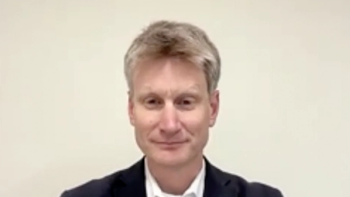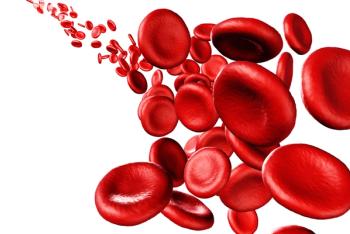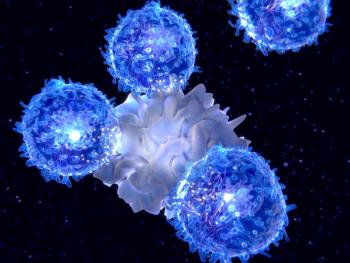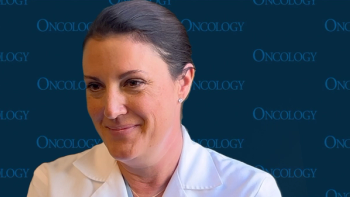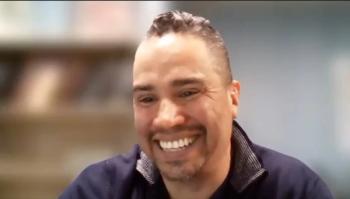
CD20 Bispecifics vs CAR T: Evaluating CRS and ICANS in Lymphoma
CRS and ICANS may affect patients with lymphoma regardless of whether they receive CAR T or bispecific antibodies, although severity and timing will vary.
For the 2025 Immune Cell Effector Therapy (ICE-T) Congress, CancerNetwork® hosted a panel discussion among several experts in cellular therapies, particularly those surrounding lymphoma.
The panel included Forat G. Lufti, MD, assistant professor of Hematologic Malignancies and Cellular Therapeutics at Kansas University Medical Center; Nausheen Ahmed, MD, associate professor of Hematologic Malignancies and Cellular Therapeutics at Kansas University Medical Center; and Sayeef Mirza, MD, MPH, hematologist/oncologist at Moffitt Cancer Center.
The experts were prompted about the differences in the ways patients experience cytokine release syndrome (CRS) and immune effector cell-associated neurotoxicity syndrome (ICANS) after receiving treatment with CD20-directed bispecific antibodies and CAR T-cell therapies.
Major considerations discussed were differences in tactics between institutions, the timing of mitigation strategies, and preemptive actions vs reactive actions.
Transcript:
Lufti: With the bispecifics, we tend to see [toxicity], usually within about 24 hours of the first dose. Of course, it typically is going to be in our step-up dosing. A lot of that can be mitigated…by giving steroids, which is in the label of epcoritamab-bysp [Epkinly] for pre-treatment dosing. Institutionally, what we’ve done here is give patients dexamethasone to take at 12, 24, and 48 hours on the initial stepping up. That mitigates it. It’s very low grade, comparatively; the number of high-grade CRS events that we’ve seen in the real world with the bispecifics is quite low.
With the CAR T constructs, it’s variable on a number of factors. It depends on the product. We can see it happening anywhere from an average of 2 to 3 days out to 3 to 4 days out for CRS. Then, typically, ICANS occurs 1 to 2 days later. Obviously, there are also patient-specific factors that play into it. I find that CAR T can be a lot more variable, and we have to take a lot of factors into account, while the bispecifics tend to be a little bit more predictable. Once we’re out of the first few doses and stepping up, the risk is quite low.
Ahmed: I’ll talk about CAR T first because I have published on this previously in lymphoma—CAR T, CD19 CAR T. We looked at [lisocabtagene maraleucel (liso-cel; Breyanzi)], [axicabtagene ciloleucel (axi-cel; Yescarta)], and [tisagenlecleucel (tisa-cel; Kymriah)], and found that any CRS or ICANS, if they are going to happen, will probably happen in the first week; if not, then in the second week. Beyond the second week, [the rate of] CRS was like 0%, and ICANS was less than 1%. It was in a large group of patients. That is why the Risk Evaluation and Mitigation Strategies [REMS] to monitor for CAR T toxicity, such as CRS and ICANS, was reduced from 4 weeks to 2 weeks.
In the first 2 weeks, we have to be vigilant, which is a bit different from bispecifics, where the grade of CRS is lower. The fact is that with steroids, we can mitigate or quickly manage any CRS. With CAR T, when we do have CRS or ICANS, the management of that may not necessarily be steroids; management of CRS is tocilizumab [Actemra], and different institutions may have a slightly different threshold for when to give the tocilizumab. Then, there are some prophylactic strategies that may be used with certain CAR T [therapies] that have a higher incidence of high-grade CRS and ICANS. There’s more variability within the CAR T [therapies]. With bispecifics, we are more comfortable managing CRS.
Mirza: I would say with all these B-cell–depleting therapies [in] immunocompromised states, you’re looking at an increased risk of infection. That has to be taken into consideration when you’re treating these folks. With CRS, neurotoxicity, and ICANS, all our therapies are more or less immunosuppressing. Where there’s tocilizumab, anakinra [Kineret], dexamethasone, emapalumab-lzsg [Gamifant], et cetera., all of these different therapies are knocking down the immune system in a very targeted fashion. You need to sometimes pull the trigger and treat CRS and ICANS; sometimes, with large tumor burdens, you have to prevent what you anticipate may be a high level of toxicity. Then, that comes with the caveat that you’re likely increasing the risk of infection. There’s a risk-benefit balance that needs to be considered, and that’s what makes the strategy and the discussion so necessary among multiple different physicians to reward consensus discussions and try to strategize the right pathway for each patient. Each patient is personalized; that’s what goes into it.
Newsletter
Stay up to date on recent advances in the multidisciplinary approach to cancer.


